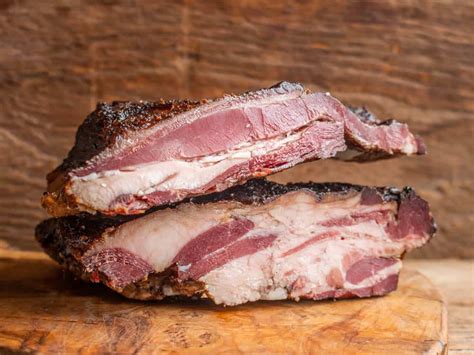The Flavor of the Wild: Homemade Venison Bacon
Venison bacon. The very phrase conjures images of smoky backcountry kitchens and hearty, adventurous meals. While commercially produced venison bacon exists, nothing quite compares to the rich, savory flavor of a batch made from scratch using your own harvested venison. This article will guide you through the process, answering common questions and providing tips for crafting truly exceptional venison bacon.
Why Make Venison Bacon at Home?
Many hunters find themselves with extra venison after a successful hunt. Turning that extra meat into bacon is a fantastic way to preserve the bounty and enjoy a unique, flavorful addition to your meals. Homemade venison bacon offers several advantages:
- Superior Flavor: You control the curing process, resulting in a bacon uniquely tailored to your taste preferences. You can experiment with different spice blends and smoking techniques to achieve the perfect profile.
- High-Quality Ingredients: You know exactly what's going into your bacon, avoiding added nitrates, nitrites, or other undesirable ingredients often found in commercially produced bacon.
- Cost Savings: While the initial investment in curing supplies might seem high, making your own bacon can be more cost-effective in the long run, especially if you're a regular venison hunter.
What Cut of Venison is Best for Bacon?
The ideal cut for venison bacon is the belly. Similar to pork belly, the venison belly provides the necessary fat content for a rich, flavorful bacon. Look for a belly with a good balance of meat and fat; too lean, and the bacon will be dry; too fatty, and it might be overly greasy.
How to Choose the Right Venison Belly:
- Thickness: Aim for a belly that's about 1-1.5 inches thick.
- Fat Distribution: Even fat distribution throughout the belly is key for consistent cooking and flavor.
- Freshness: Use fresh, high-quality venison. The fresher the meat, the better the final product.
The Curing Process: A Step-by-Step Guide
The curing process is crucial for creating safe and flavorful venison bacon. Here's a general guideline. Specific recipes will vary, so always follow your chosen recipe carefully.
- Preparation: Trim excess fat and silver skin from the venison belly. Cut the belly into manageable pieces (approximately 1-inch thick).
- Curing: This involves submerging the venison in a curing solution typically containing salt, sugar, nitrates/nitrites (optional but recommended for safety and color), and spices. The curing time will depend on the recipe and the thickness of the bacon. Refrigeration is essential during this stage.
- Cold Smoking (Optional but Recommended): Cold smoking imparts a smoky flavor and enhances the preservation of the bacon. This process involves smoking the bacon at low temperatures (around 70-80°F) for several hours, or even overnight.
- Cooking: After curing and smoking (if applicable), the bacon is ready to be cooked. You can pan-fry, bake, or grill the bacon, depending on your preference.
Frequently Asked Questions (FAQs)
Can I make venison bacon without nitrates/nitrites?
While possible, using nitrates/nitrites is generally recommended for food safety and to achieve the characteristic pink color and flavor of bacon. If omitting them, be extra cautious about curing times and refrigeration.
How long does homemade venison bacon last?
Properly cured and stored, homemade venison bacon can last for several weeks in the refrigerator. Freezing is also an option for longer storage.
What spices work well with venison bacon?
Many spices complement the rich flavor of venison. Popular choices include maple sugar, black pepper, brown sugar, smoked paprika, garlic powder, and onion powder. Experiment to find your perfect blend!
Is venison bacon harder to make than pork bacon?
The process is similar, but venison can be leaner than pork, so careful attention to the fat content and curing process is important to prevent dryness.
Can I use other cuts of venison for bacon?
While the belly is ideal, other cuts with some fat content, such as the shoulder or backstrap, can be used but might result in a leaner, less fatty bacon.
Making homemade venison bacon is a rewarding experience. The process requires patience and attention to detail, but the end result is a delicious and unique treat that showcases the wild flavor of your harvest. Remember to always prioritize food safety and follow a reliable recipe for best results. Enjoy the fruits of your labor!

